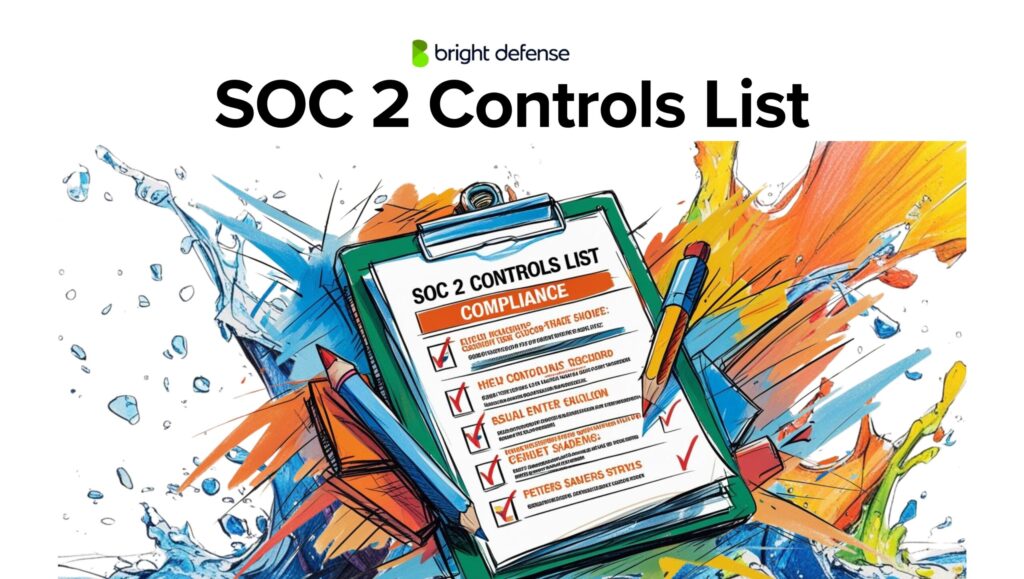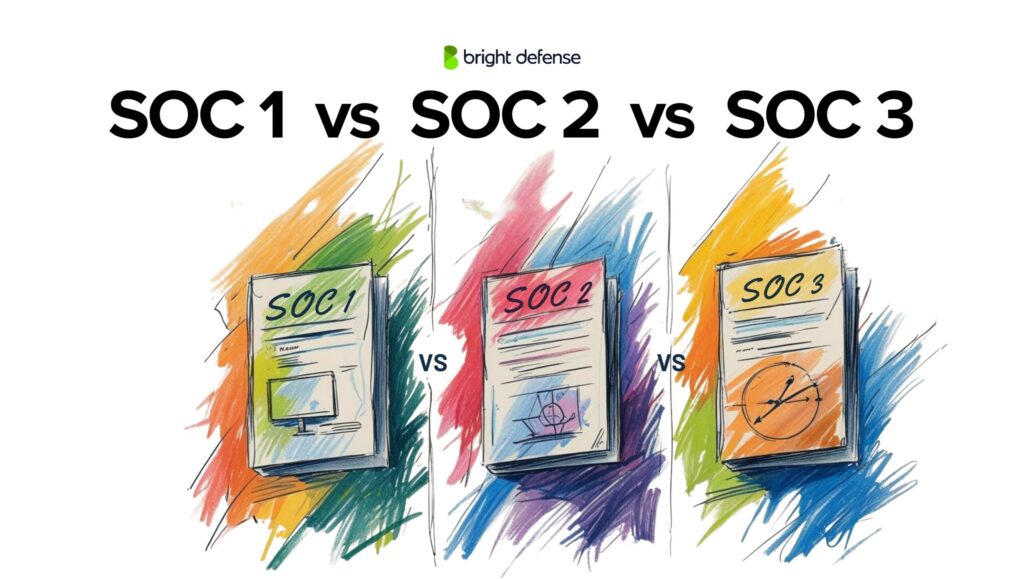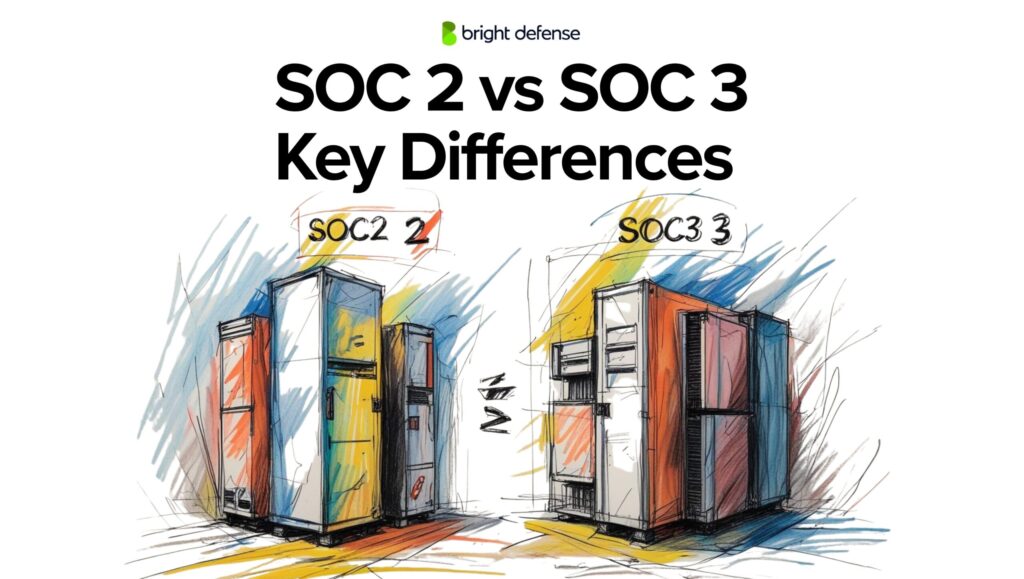
Tim Mektrakarn - CISSP | CISA | ISO 27001
June 28, 2025
Cybersecurity for MSPs: Essential Best Practices Guide
Many businesses entrust their IT services to Managed Service Providers (MSPs). According to a 2023-2030 study by LinkedIn, the global MSP market is expected to reach over $300 billion in 2023, up from $242 billion in 2022, a growth rate of over 27%. With a growing reliance on their services, cybersecurity for MSPs is paramount.
Bright Defense was founded by managed service provider veterans with 20 years of experience in the space. We protect our customers’ critical data from cyberattacks through continuous compliance services. MSP security is one of our core competencies. This article delves into the critical cybersecurity practices that MSPs must adopt to safeguard their operations and thwart bad actors who attempt to steal sensitive data from customers’ systems.

Defining the Cybersecurity Landscape for MSPs
MSPs are the backbone of modern business operations, providing critical IT services. However, as they expand their offerings, MSPs face increasingly complex cybersecurity challenges. MSPs need to protect not only their infrastructure but also their clients’ data and operations. This unique role makes them central figures in the ever-evolving cybersecurity landscape.
According to ConnectWise, managed service providers faced 440,000 cybersecurity incidents in 2022. This was more than any other business sector. MSPs were also the second most target sector for ransomware. Additionally, a typical network operations center or security operations center uses many tools that are targets for cyber attacks. Solarwinds Orion and Kaseya VSA were both prominent tools exploited by hackers in recent years.
Effective cybersecurity for MSPs begins with adopting best practices, implementing a blueprint or cybersecurity framework, implementing technical controls and mitigation tools, data protection and recovery practices, and awareness training for all employees.
Understanding the Risks
Before diving into solutions, MSPS must comprehend the cybersecurity risks they face. These can range from phishing attacks and malware to more complex threats like ransomware and advanced persistent threats (APTs). Knowledge of these risks helps in developing a more targeted cybersecurity strategy.
MSPs need to understand the types of industries and data they protect on their customers’ behalf. There are numerous security rules in place to protect customer, financial, and healthcare information. Implementing a solid security framework, such as the NIST Cybersecurity Framework 2.0 (CSF), is crucial. This framework offers a blueprint encompassing key pillars: Identify, Protect, Detect, Respond, Recover, and Govern. Let’s explore these pillars together.

Identify: Comprehensive Risk Assessment
The foundation of effective cybersecurity is a thorough risk assessment. MSPs must have a robust asset management system and process. MSPs should regularly evaluate their infrastructure to identify vulnerabilities, from supply-chain risks that can introduce software loopholes to hardware defects and limitations. This assessment should extend to their clients’ endpoints and systems, ensuring end-to-end security.
Protect: Implementing Layered Security Measures
Cybersecurity is not a one-size-fits-all solution. MSPs should employ a multi-layered security strategy that includes firewalls, antivirus programs, security monitoring, endpoint protection, intrusion detection systems, and encryption protocols. This approach ensures multiple defensive barriers against potential cyber threats.
Identity and Access Management (IAM) has increasingly become crucial due to the widespread use of Single Sign On (SSO) in all Cloud and web applications we utilize. This is problematic because a single account breach can lead to network traversal and escalation of privilege. Multi-factor Authentication (MFA) and Conditional Access are critical in combating account breaches. Systems Administrator accounts should be separated and assigned access to what’s only needed using the principles of least privilege.
Protect: Regular Software Updates and Patch Management
One of the simplest yet most effective cybersecurity practices is keeping software current. Regular updates and patch management close security gaps and protect against newly discovered vulnerabilities. Patching systems is time-consuming, especially for critical systems where patches need testing before deployment. Having a robust vulnerability management program helps prioritize which patches need deployment.
Streamlining and prioritizing the patches that need to be deployed starts with knowing what vulnerabilities exist on the systems. Vulnerability scanning software from Qualys, Tenable, Red Sentry, and the like allows MSPs to prioritize the patches that must be tested before deploying to production systems.
Protect: Employee Training and Awareness
Improving Cybersecurity for MSPs starts with training employees on the threats and risks their customers and the MSP itself will likely face. Human error often leads to security breaches. Human error caused the attack that disrupted the operations of MGM Resorts in September 2023, resulting in $100 million in damages. In this case, MGM’s help desk services were targeted directly which allowed malicious actors to take over their entire environment.
MSPs should invest in regular cybersecurity training programs for their staff, educating their teams about the latest cybersecurity threats and best practices. A well-informed team is a critical defense line against cyber attacks. A security aware culture that is knowledgeable about your policies is a key to comprehensive protection of your client’s digital assets.

Detect: Advanced Threat Detection and Response
MSPs should leverage advanced tools for threat detection and response. This includes using AI-driven managed security services that can predict, identify, and neutralize threats in real-time, ensuring a swift response to any security incident. Log aggregation and analysis is critical in the detection and investigation of incidents. Getting detection and prevention closer to the end users has been critical in providing telemetry data at the riskiest point.
Respond: Incident Management
Incident response planning is crucial for MSP cybersecurity. Firstly, it ensures rapid response and resolution of incidents, minimizing client downtime. In today’s fast-paced business environment, even a small downtime can lead to significant financial losses and damage to a client’s reputation.
Second, a well-structured incident management plan enhances customer trust and satisfaction. Clients depend on MSPs for consistent, reliable service. Knowing that their MSP can effectively handle incidents is reassuring.
Third, it helps in maintaining compliance with industry standards and regulations. Many sectors have strict guidelines about data security and service uptime, and a robust incident management plan helps adhere to these requirements.
Recover: Robust Backup and Disaster Recovery Plans
In a data breach or loss, a solid backup and disaster recovery plan is vital. MSPs must ensure that data is regularly backed up and can be quickly restored to maintain business continuity for themselves and their clients. MSPs should implement an air-gapped backup solution, an advanced system of data storage isolated and detached from the network. Air-gapped storage protects critical assets since the data cannot be altered.
This concept expands on the traditional 3-2-1 backup strategy to 3-2-1-1-0, which is having 3 copies of your data stored on 2 different types of media (disk and tape) with 1 copy stored offsite and now 1 copy in air-gapped immutable storage, with the additional 0 means verifying backups so they contain zero errors. Errors can lead to failed restorations.

Govern: Compliance and Regulatory Adherence
Managed Service Providers must often demonstrate their cybersecurity practices to their clients to win new customers. Compliance frameworks provide a roadmap for the organization to follow. Audit reports provide third-party validation of the cybersecurity program.
MSPs frequently benefit from SOC 2 compliance. CMMC compliance is also popular and is becoming required for MSPs that support Department of Defense subcontractors. Let’s review the benefits of both for your managed service provider.
SOC 2 (System and Organization Controls 2)
SOC 2 is a widely recognized framework developed by the American Institute of Certified Public Accountants (AICPA). It focuses on the security, availability, processing integrity, confidentiality, and customer data privacy. SOC 2 compliance is crucial for MSPs, demonstrating their commitment to safeguarding client information and maintaining a secure operating environment.
MSPs undergo a rigorous auditing process to achieve SOC 2 compliance. This process involves evaluating controls and procedures related to data protection, monitoring, and incident response. SOC 2 compliance helps MSPs build trust with their clients, assuring them that the service provider has implemented robust security measures.
CMMC (Cybersecurity Maturity Model Certification)
CMMC is a framework developed by the U.S. Department of Defense (DoD) to enhance the cybersecurity posture of organizations, particularly those within the defense supply chain. While CMMC primarily applies to organizations working with the DoD, many MSPs serving clients in this sector must also adhere to CMMC requirements.
For MSPs, achieving compliance with SOC 2 and CMMC enhances their credibility and enables them to provide cybersecurity services to a broader range of clients, including those in highly regulated industries. These frameworks serve as benchmarks for security and compliance, demonstrating an MSP’s commitment to protecting sensitive information and maintaining the highest cybersecurity standards.

The Benefits of Continuous Compliance for MSPs
Continuous compliance is a proactive approach that offers numerous benefits for MSPs and their clients. Let’s explore why embracing continuous compliance is a game-changer in the the MSP cybersecurity landscape.
Enhanced Security Posture
Continuous compliance is like a protective shield that constantly fortifies an MSP’s security infrastructure. By adhering to compliance standards and continuously monitoring and adapting to evolving threats, MSPs can detect and mitigate potential vulnerabilities in real-time. This proactive stance significantly reduces the risk of data breaches and cyberattacks, instilling confidence in clients who rely on MSPs to safeguard their sensitive information.
Client Trust and Retention
Trust is the bedrock of any successful MSP-client relationship. Continuous compliance demonstrates a commitment to maintaining the highest levels of data security and regulatory adherence. When clients see that their MSP is not merely meeting compliance requirements but actively staying ahead of emerging threats, it fosters trust and strengthens the long-term partnership. Clients are more likely to remain loyal when they know their sensitive data is in safe hands.
Competitive Advantage
In a competitive MSP landscape, setting yourself apart from the crowd is paramount. 41% of companies say the lack of continuous compliance slows down sales cycles. Continuous compliance can be a unique selling proposition. It allows MSPs to differentiate themselves by showcasing their dedication to security and compliance. Clients are increasingly discerning when choosing their technology partners, and MSPs with a track record of continuous compliance are well-positioned to attract new business.
Cost-Efficiency
Continuous compliance minimizes the likelihood of costly security breaches or regulatory fines. While there may be initial investments in technology and processes to achieve and maintain compliance, the long-term financial benefits far outweigh these costs. MSPs can avoid the heavy financial burdens associated with data breaches, lawsuits, or non-compliance penalties.
Streamlined Operations
Efficiency is the lifeblood of MSP operations. Continuous compliance streamlines processes by automating many aspects of monitoring and reporting. This allows MSPs to focus on core activities, provide better services to clients, and reduce the administrative burden associated with compliance. The result is a more agile and responsive organization.
Scalability and Growth
Continuous compliance lays the groundwork for MSPs to scale their operations. Clients in regulated industries often require their technology partners to grow alongside them while maintaining compliance. MSPs that have a robust continuous compliance framework in place are better positioned to accommodate their clients’ growth trajectories and expand their own businesses.
In summary, continuous compliance is not merely a checkbox to be marked; it’s a strategic imperative for MSPs. It offers enhanced security, builds trust with clients, provides a competitive edge, saves costs in the long run, streamlines operations, and facilitates growth. Embracing the philosophy of continuous compliance positions MSPs as reliable, forward-thinking partners in the increasingly complex landscape of technology and cybersecurity.

Cyber Liability Errors & Omissions (Tech E&O) Insurance
Maintaining cyber liability or Tech E&O insurance is paramount for Managed Service Providers (MSPs) in today’s high-risk landscape. This type of insurance serves as a critical safety net, providing financial protection against various cyber threats, such as data breaches, cyber-attacks, and system failures. MSPs are custodians of sensitive client data and often have access to their client’s IT infrastructure, so they are prime targets for cybercriminals.
In a security breach, the financial implications can be devastating, not just in direct losses but also due to legal fees, regulatory fines, and reputation damage. Cyber liability insurance helps mitigate these risks by covering these costs, ensuring that an MSP can recover and continue operations without crippling financial strain.
Furthermore, having this insurance demonstrates to clients that the MSP is responsible and prepared for potential cyber security threats, which can be a significant factor in building and maintaining client trust. Insurance carriers are scrutinizing MSPs more thoroughly in underwriting coverages. An annual third-party certification, such as SOC 2, can significantly reduce costs.
Conclusion
Cybersecurity for MSPs is a dynamic, ongoing process that requires consistent improvement. By embracing these practices, MSPs can protect themselves and their clients against the myriad of cyber threats and position themselves as trusted, security-conscious partners in the digital age. The key is to stay informed, prepared, and proactive in cybersecurity measures, ensuring peace of mind in a world of uncertainties.
Bright Defense offers continuous compliance services tailored for MSPs. With over 20 years of knowledge and expertise in the MSP industry, Bright Defense is uniquely situated to help MSPs better protect themselves and their customers.

Bright Defense Delivers Cybersecurity Compliance for MSPs
If you are a managed service provider in need of compliance and security services, Bright Defense can help. We were founded by a team of MSP veterans who have built, grown, and sold MSPs. We know the value compliance delivers in speeding up sales cycles, building customer trust, and eliminating the need for time-consuming security forms.
In addition, we offer virtual CISO (vCISO), managed security awareness training, and managed compliance automation. We operate as an extension of your team to help you offer a more robust and secure managed services business.
If your MSP wants to achieve SOC 2, CMMC, HIPAA, or other compliance frameworks, contact us today! We look forward to partnering with you.
Get In Touch



